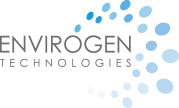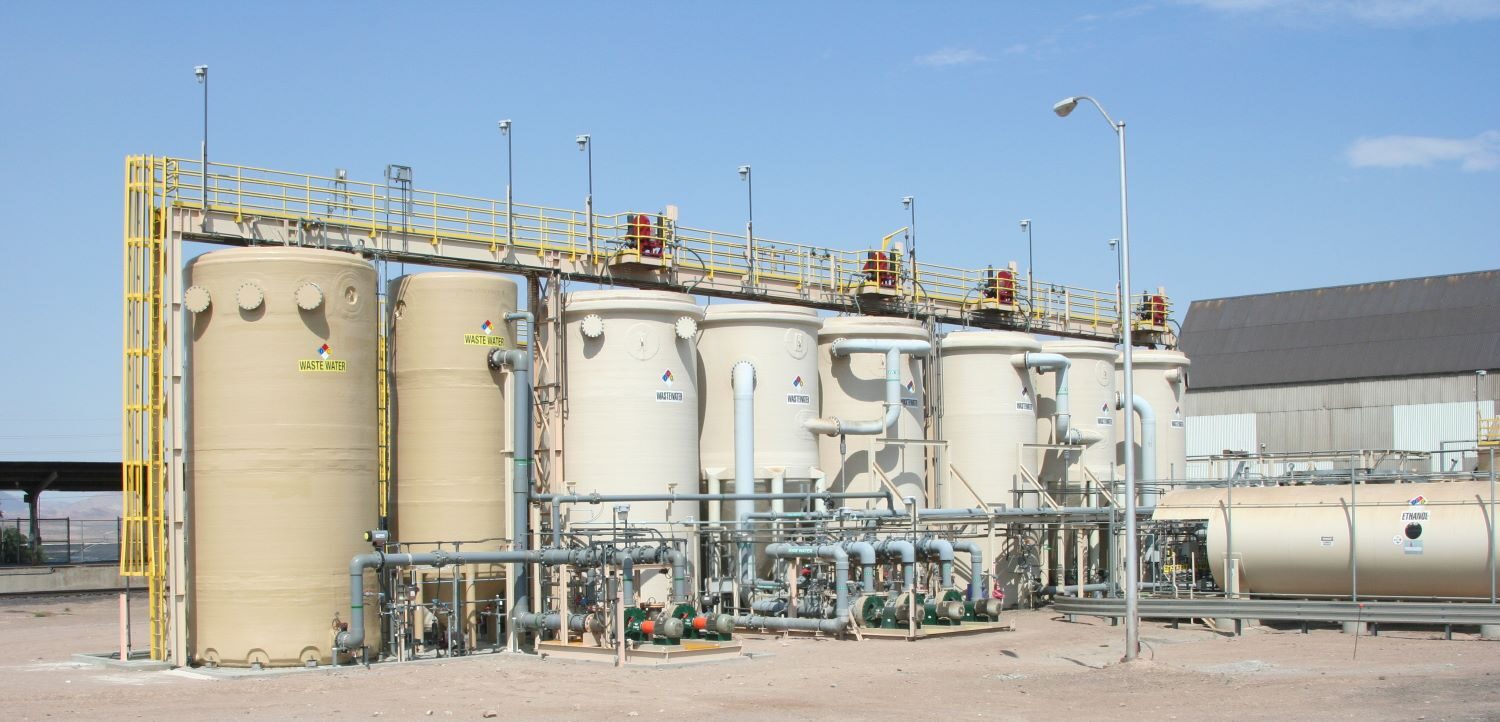Proven, “green” biological treatment technology answers need for treatment of perchlorate-laden groundwater in Henderson, Nevada
Envirogen announced the successful start-up of a large-scale biological fluidized bed bioreactor system (FBR) for American Pacific Corporation (AMPAC), to achieve the biodegradation of perchlorate and other constituents from groundwater in the area of a former manufacturing facility in Henderson, Nevada. The 1.2 million gallon per day (MGD) capacity system replaces a smaller biological system that had been in service since 2006, and utilizes Envirogen’s patented fluidized bed reactor technology in a custom configuration to reduce influent concentrations of perchlorate of up to 500 ppm to non-detectable levels prior to surface discharge.
According to Todd Webster, Ph.D., P.E., Vice President for Envirogen, the AMPAC installation underscores the rising prominence of FBR technology, both for perchlorate remediation and as a sustainable, cost-effective tool for a wide range of groundwater treatment challenges. “This site presented us with a high-load scenario coupled with the need for trouble-free performance and a low operational burden,” Webster explained. “With this fluidized bed reactor design, we were able to meet AMPAC’s target treatment goals for perchlorate as well as chlorate and nitrate, while fine-tuning the equipment to provide them with the lowest-cost performance possible. Today, we are pushing fluidized bed reactor technology to meet new challenges for treatment efficiency and cost-effectiveness. Its versatility in handling multiple constituents and varying flow characteristics also points to its potential to treat other contaminants, such as selenium, hexavalent chromium or chlorinated solvents. As sustainability becomes an important element in treatment technology selection, we feel strongly that the use of the FBR in groundwater remediation applications will grow,” he continued.
According to Dr. Joseph Carleone, President and CEO of AMPAC, the start-up of the new treatment facility represents an important step in the company’s long-term effort to efficiently address perchlorate in groundwater contamination at the former manufacturing site. “Following an extensive groundwater characterization effort and the installation and operation of a successful full-scale in-situ biological treatment system, which began operating in 2006, we made the decision to expand the entire groundwater remediation system and, with that change, an FBR based system was the clear choice,” Carleone said. “We were familiar with Envirogen and their fluidized bed reactor technology from previous projects, and we’re pleased to say that based on performance, they were the right choice to deliver a large ex-situ FBR system that comprises the critical part of our overall system expansion and will help us to meet our goals for this site,” he added. The new perchlorate treatment system features two first-stage fluidized bed bioreactorsand one second-stage FBR, along with an Envirogen modular biofilter technology system for odor control. The facility will remove up to 500 ppm perchlorate to non-detectable levels and, depending on the load, treat as much as 800 gpm of groundwater fed into the system from a series of extraction wells. Envirogen’s advanced process automation provides control of flow rates, electron donor addition and maintenance of an optimal treatment environment within the bioreactors.
Envirogen’s fluidized bed reactor is a fixed-film bioreactor in which biological media is suspended, or fluidized, within the reactor vessel by the upward flow of water through the system. The suspended media provides a large surface area for microbial growth and allows a biomass density several times greater than that of other bioreactor designs under similar loading conditions. Microorganisms in the reactor completely destroy influent perchlorate and other targeted contaminants under anoxic conditions, without generating hazardous waste by-products.
According to Webster, Envirogen’s technology portfolio offers a range of good options for the cleanup of perchlorate in groundwater. “The fluidized bed bioreactor system is today’s treatment technology of choice for high load, high flow perchlorate cleanup in groundwater. At the same time, we have extensive experience with ion exchange in this application. With the potential for stricter perchlorate regulations across the United States in the near future, we’re ready to help municipalities and industry meet these challenges with custom tailored, sustainable, low lifecycle cost solutions,” he said.
How does a fluidized bed reactor work? An overview of Envirogen’s patented FBR treatment process/fluidized bed reactor design. (US Patents: 6706521, 5750028, 5788842, 7754159, 7611890, 7572626, 8323496, 6830922).


